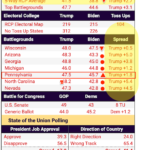Alcoa Corporation (NYSE:AA) BofA Securities 2024 Global Metals, Mining & Steel Conference Transcript May 14, 2024 3:00 AM ET
Executives
Bill Oplinger – President and CEO
Analysts
James Hetherington – Bank of America, Australian Sales Desk
James Hetherington
My name is James Hetherington, I’m from BofA’s Australian Sales Desk. It’s my great pleasure to introduce this afternoon Bill Oplinger, President and CEO of Alcoa Corp. As most of you will know, Bill has performed a number of roles at Alcoa over the past couple of decades, becoming President and CEO last year.
With that, I’ll hand to Bill to begin his presentation, there will be an opportunity for some Q&A at the end. Bill?
Bill Oplinger
Thanks and I am going to take the lectern here. Normally, I wouldn’t read you prepared remarks, however, we are in the midst of the Alumina Limited deal and so because of that, we need to be very precise about what I say. So, unfortunately, I’m going to read you some prepared remarks.
So, thanks for joining the discussion about Alcoa today, this is my seventh BofA conference representing Alcoa Corp., although my first one as the CEO, it’s always a great opportunity to interact with investors and it’s always a good conference.
So, of course, please read the cautionary statement and important information slides at your convenience. There’s loads of those.
So just quickly, to get everybody on the same page, Alcoa is a global pure play upstream aluminum company with ownership in 27 locations on six continents. We have two business segments, alumina and aluminum.
In aluminum, Alcoa is a top five global producer, excluding China, with smelters close to major customer markets. We have 87% of our smelting tons powered by renewable energy and our carbon emission intensity is currently less than one-third the industry average.
The alumina segment contains Tier 1 bauxite mines and alumina refineries, including five of the 20 largest mines and refineries outside of China. Almost all of the mining and refining assets are held in a joint venture called alumina, I am sorry, Alcoa World Alumina and Chemicals, or AWAC, a 60-40 joint venture with Alumina Limited.
We have three strategic priorities, to reduce complexity, simplify the company and reduce costs, to drive returns for our stockholders in everything we do, and to advance sustainably, both financially and operationally, so that Alcoa will remain a premier pure play aluminum company for years to come.
And finally, we’re proud to be recognized with the highest possible governance score by ISS, another reflection of our commitment to our stockholders.
So let’s talk about the most exciting development for our stockholders, the acquisition of Alumina Limited. In late February, we announced our proposed acquisition of Alumina Limited, which would give Alcoa 100% ownership in the AWAC joint venture.
In the all-stock transaction, Alumina Limited shareholders would receive 0.02854 Alcoa shares for each Alumina Limited share. Based on Alcoa’s and Alumina Limited’s closing prices as of February 23, 2024, the agreed ratio implied an equity value of approximately $2.2 billion for Alumina Limited and a premium of 13.1% to Alumina Limited’s share price.
Today, through a complex web of holdings, at a sub-segment level, Alumina Limited shareholders have exposure to 40% of only the AWAC bauxite, alumina and aluminum assets. Upon completion of the transaction, Alumina Limited shareholders will own 31.25% and Alcoa stockholders would own 68.75% of the combined company on a fully diluted basis.
The acquisition would further advance Alcoa’s leading position as the global pure play upstream aluminum company. In 2023, Alcoa reported consolidated production of 41 million metric tons of bauxite, 10.9 million metric tons of alumina and 2.1 million metric tons of aluminum.
A combination of Alcoa and Alumina Limited enhances Alcoa’s vertical integration across the value chain with leading positions across mining, refining and smelting with Tier 1 assets at every step. The increased vertical integration in a combined company also provides more stability throughout the commodity cycle.
There’s a full line of Sustana low carbon alumina and aluminum products to meet growing customer demand. While premiums are still modest, we have made sales of EcoSource smelter grade alumina and non-metallurgical grade alumina, EcoDura recycled content aluminum and EcoLum low carbon primary products.
Long-term R&D projects include the ELYSIS zero carbon aluminum smelting process, the ASTRAEA high purity recycling process, and our Refinery of the Future project to redesign alumina refining for higher efficiency, lower carbon emissions, lower water use and less waste.
We strive to maintain investment grade balance sheet metrics and our debt ratings tend to be at the low end of investment grade. We’re the top of high yield where we are today. With a strong balance sheet and the financial flexibility to self-fund both upcoming capital requirements and our pipeline of technology development projects, we are well positioned to navigate volatile market conditions.
Looking at the three products groups, AWACs mining operations are strategically located close to Alcoa’s refineries and major Atlantic and Pacific markets. The proposal enables us to be a sector leader as the largest bauxite miner among publicly listed pure plays and second largest globally, the largest alumina producer among publicly listed pure plays and third largest globally excluding China, and the second largest aluminum producer among publicly listed pure plays, and fifth largest globally excluding China.
Alumina Limited is an Australian company, so I want to take a moment to discuss our history in Australia. For the past 60 years, Alcoa has been a responsible long-term investor and operator in Australian bauxite mining and alumina processing, as well as aluminum smelting.
Our annual spend in Australia is more than A$3 billion locally through wages, taxes, royalties, procurement and community investment. In addition, our Australian business was the first mining company to receive recognition from the United Nations for rehabilitation excellence.
We believe now is the right time to consolidate ownership in AWAC, which would build on our commitment to the region and provide significant benefits to employees, customers, host communities and others who rely on the continued success of our global business. Following this transaction, we would be better positioned to continue and have intention of continuing our long-term plan of investing in Australian bauxite mining and alumina refining.
To sum up the Alumina Limited acquisition, we believe the acquisition will deliver immediate and significant value for both companies’ shareholders and is the right path forward for both Alcoa and Alumina Limited.
Alumina Limited’s shareholders will participate in the upside potential of a stronger, better-capitalized company with a larger and more diversified upstream aluminum portfolio. Alcoa offers a full suite of low-carbon and recycled content products and has long-term technology projects under development to transform the upstream aluminum value chain.
Additionally, Alcoa shares will be traded in Australia through a secondary listing on the Australia Securities Exchange or ASX via Chest Depository Interest or CDIs. And as stated earlier, it elevates the ownership position of Alumina Limited shareholders and provides them with a premium over the recent share price for their non-controlling interest.
For Alcoa stockholders, the transaction increases Alcoa’s economic interest in our core Tier 1 bauxite and alumina assets, and simplifies governance, resulting in greater operational flexibility and strategic optionality. It advances our position as the global pure-play upstream aluminum company and enhances Alcoa’s vertical integration along the value chain across bauxite mining, alumina refining and aluminum smelting.
Alcoa would significantly increase its ownership in five of the 20 largest bauxite mines and five of the 20 largest alumina refineries globally, excluding China. Following this transaction, Alcoa will be better positioned to continue our long-term plan of investing in Australian bauxite mining and alumina refining.
Together, Alcoa and Alumina Limited shareholders will benefit in several ways. There are near-term tangible cost synergies and potential for further organizational optimization, replacing the complex JV arrangement with a simpler, less expensive structure. We will be more efficient in executing decisions with a view to maximizing returns with fully aligned interest among Alcoa and former Alumina Limited shareholders. We remain fully committed to our capital allocation framework. The all-stock transaction preserves Alcoa’s balance sheet strength and provides capital structure flexibility. As one company, we will continue to have opportunities to pay distributions to shareholders while also transforming the portfolio and positioning ourselves for growth, deploying capital to maximize value creation.
So, in sum, we believe this is the right deal for Alumina Limited’s shareholders, for Alcoa’s shareholders and our broader stakeholders and communities. We are confident the transaction will build on our leading position as a global pure-play aluminum company and improve our ability to execute on long-term strategies and growth opportunities.
Finally, a quick note on transaction timing. We expect to close the transaction in the third quarter. This quarter, we expect that Alcoa will be filing a proxy statement and Alumina Limited will be filing a scheme booklet in connection with the transaction. There’s also government approvals that we’re seeking in the second and third quarters, which include, in Australia, the Foreign Investment Review Board and the Australian Competition and Consumer Commission, and in Brazil, the Brazil Administrative Council for Economic Defense. We expect to apply for our ASX listing in May. And finally, but most importantly, the shareholder votes to approve the transaction and issue the exchange shares are expected to take place in the third quarter.
While the Alumina Limited transactions is exciting, we remain focused on making Alcoa stronger. We continue to make progress on key near-term actions to improve financial results at Alcoa, as well as keeping momentum on long-term activities.
Focusing on the near-term, the overall outlook is positive. We are seeing further improvement in purchase prices for key raw materials. So, if the current market outlook continues, our expectation is to exceed our savings target.
We’ve deployed our productivity and competitiveness program and expect to realize savings in the coming quarters with full run rate improvement of $100 million by the first quarter of 2025. The restart of one potline at Warrick is complete and we remain optimistic that we will see additional IRA funding decided by the U.S. Government sometime this year.
The Kwinana full curtailment, which we announced in January, is on track, with all production to be stopped by the end of the second quarter. We expect to see resulting EBITDA improvement in the third quarter.
On a negative note, the Alumar restart has slowed, while we have solved the number of issues, we continue to struggle with equipment reliability and personnel experience. We’ve reinforced the leadership and expert teams in Brazil and are taking actions to improve its overall performance. Recently, stability is improving, but we still have a long road ahead of us.
San Ciprián is a focal point of our near-term actions. Consistent with the viability agreement, we restarted 32 pots in the first quarter. Our work is in two areas of focus, to take actions to make San Ciprián viable for the long-term and alternatively to find a potential purchaser for the site.
We’ve completed the optimization study and delineated a modest set of potential short-term and medium-term improvement actions. We are working on implementing actions while preserving cash.
Though purchase prices for energy and sales prices for metal and alumina have improved, the business remains unviable and we do not expect near-term government support to be forthcoming. We started a potential sale process for the entire location, both the smelter and the refinery, and we expect to complete the bid process by the end of June. Any long-term solution requires government and union support.
Consistent with all these actions and the current market environment, and barring reaching an acceptable outcome on either of these two paths, we expect cash to run out in the second half of 2024. At that point, Alcoa Corporation will not provide further funds and hard decisions will need to be made.
The near-term markets are showing signs of improvement and the long-term outlook remains very positive for both alumina and aluminum. For alumina, at $415 per ton on Friday and I believe $423 a ton today, alumina prices have reached a two-year high. While demand has remained steady, near-term supply concerns have continued.
Chinese refineries have curtailed capacity due to bauxite shortages and environmental issues. The fuel depot explosion in Guinea raised concerns about the security of supply for China’s and the world’s largest seaborne bauxite source. The Queensland-Australia gas supply disruption and Kwinana curtailment have raised alumina supply concerns.
Long-term alumina demand is expected to grow alongside aluminum, but limited low-carbon energy sources and increasing reliance on seaborne bauxite supply, particularly for Chinese refineries, are expected to constrain the growth potential and cost competitiveness of future refineries.
For aluminum, while it’s retraced slightly in recent weeks, LME aluminum recently hit its highest level in a year and all — and first quarter regional premiums in the U.S., Europe and Japan all increased sequentially. Currently, demand is looking up. Demand in the automotive and electrical sectors have remained strong. We’re seeing signs of recovery in packaging. Building construction remains the most challenged end market, but is showing signs of stabilization, especially in North America. In our order books, we see sales of value-add products increasing both year-over-year and quarter-over-quarter. We’re even seeing opportunities for spot sales across our portfolio.
From a supply perspective, there are a few new projects coming online. Even considering the announced Yunnan restarts, China continues to hold to its 45 million metric ton production cap, so inventory days remain low and unwanted Russian aluminum still makes up more than 90% of the LME inventory.
Recently, the U.S. and U.K. Governments announced sanctions on Russian aluminum. The impact was to establish an import ban into the U.S. and the U.K., and restrict activity at the LME and the CME. This was the right decision, as Alcoa has consistently advocated, and we maintain that the EU should take action as well. On Friday, the LME published their country of origin statistics for April 30th, and Russian origin metal tons declined, but remained 89% of total inventory.
Long-term, we remain bullish. More aluminum, both primary and secondary, will be needed to drive the renewable energy transition and achieve global decarbonization goals. Today, there are not enough announced projects to meet that expected demand and future projects face challenges finding renewable energy supplies amid expected increases in carbon emission costs. Even China is adding aluminum to its emission trading system or ETS. In summary, alumina and aluminum markets are improving in the near-term, and our long-term outlook remains very positive.
As a company, we’re excited about the progress we’re making on multiple fronts. Through the Alumina Limited deal, we’re increasing the economic interest in assets we already control and operate and an all-stock transaction that benefits all parties.
We’ve safely executed an impressive list of operational activities to improve the business and we have more actions to complete. And both the alumina and aluminum markets are on the upswing. It’s an exciting time to be at Alcoa, so I will start with Q&A. Thank you. Questions? Dan.
Question-and-Answer Session
Q – Unidentified Analyst
Given your global exposure and the uncertainty in the world today, I’m wondering how you view the increase in political risk from operational, as well as a trade standpoint. And clearly, the U.S. Government is supportive of reshoring activity, but trade is still a big issue and aluminum is still a commodity that’s priced globally.
Bill Oplinger
So we’re a global company. We are a highly global company. We used to be known as the Aluminum Company of America. We’re now known, since 1998, as Alcoa. The reason that change was made was to signify the globalness of the company. We have assets all around the world. Australia, Europe, Iceland, Norway, Quebec, the U.S., Brazil. And so, Dan, we have been successful operating a global organization for over 130 years.
I think these things go in cycles. We are entering more of a protectionist cycle than we have seen over the last decade. That has impacts on our supply chains, but we have been able to manage through them. And so, this is one of those areas where it is really nice to have global diversity, but also product diversity.
So, we are long alum — we are long bauxite, we are long alumina, we are long aluminum and we are exposed to the major markets around the world. Specifically, our biggest customer markets are in North America and Europe, but we have been able to work through all the protectionist rhetoric over the last few years. Other questions? Yes, sir.
Unidentified Analyst
When we are thinking about the long-term price of aluminum, to what degree should we think about that sort of 3.5 times to 4 times relationship with copper as being maintained over the medium-term or do you think there is opportunity to actually create their own separate stories within their markets? I suppose just going to the second question, the Chinese market looks like starting to hit towards its ceiling in terms of supply. How confident are you in that being maintained and the implications that has on price levels?
Bill Oplinger
So, let me address each one of those. The 3.5 times to 4 times that you reference is pricing of copper to aluminum and it is a historical relationship that is held up over a long period of time. As we see copper prices go up, there is a marginal amount, I say marginal, on the margin, you can do substitution with aluminum.
So, one of the biggest markets that we have across the world is electrical and that allows us to substitute aluminum for copper. The other market that you can do some of that substitution on is in the automotive heat exchanger space and so there is an ability to change that out. So, we will see if the 3.5 times sticks or not, but clearly that drives upward pressure on aluminum demand as copper prices go up.
The question around the 45 million metric ton cap in China, the reason why we believe they will keep that cap in place is because they have kept the cap in place over the last couple of years. All new capacity in China has had to have existing operational capacity licenses. So, anything that you see in Yunnan that is going up is a transfer of license.
So they have stuck to the 45 million metric tons. They are currently running at about 42 and a half. Running a 45 million metric ton system at a 95% capacity level is pretty good. At any given time, they will be less than that 45 million. So, we think between the 42 million metric tons and 43 million metric tons, they are about maxed out on their production capacity, on their production, on a 45 million cap limit. So, we think that it will stay there.
Unidentified Analyst
Got to have a second one.
Bill Oplinger
Good.
Unidentified Analyst
Given the emphasis in the investment community on sustainability these days, Alcoa has never really been that large in recycling of aluminum. Is there any further interest in moving in that to help with sustainability?
Bill Oplinger
So, as we look forward, the primary demand will grow at around 2% globally. Secondary demand will grow at about 3% globally. And you would say 2 to 3% is not a big deal, but over the long haul, it is a big deal. Secondary will have an important part in the market. Right now, we are limited on our ability to process secondary metal.
What we are really trying to determine is, is there a way to make favorable shareholder returns in the secondary business? And so, I think, secondary will be more important over time. We just need to figure out how or when we would participate in that space. But I think it is important for the future of aluminum. Good.
James Hetherington
With that, I think, unfortunately, we are out of time. But…
Bill Oplinger
Thank you.
James Hetherington
Thank you, Bill.
Bill Oplinger
Thank you very much.







